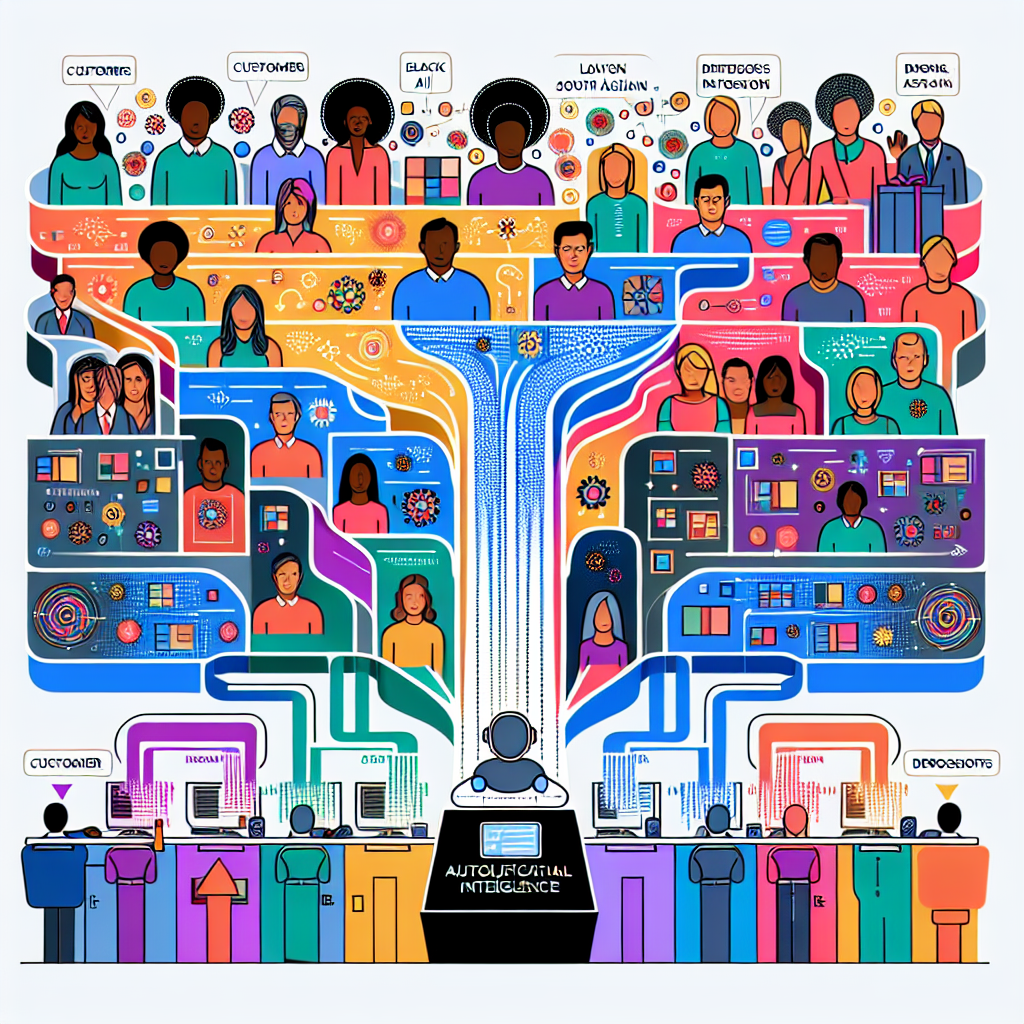In today’s digital age, businesses are constantly looking for ways to improve their marketing strategies and reach the right customers with the right message at the right time. One of the most effective ways to achieve this is through customer segmentation, a process of dividing customers into different groups based on their characteristics, behaviors, and preferences. By segmenting customers, businesses can tailor their marketing efforts to better meet the needs and desires of each group, ultimately leading to higher customer satisfaction and increased sales.
AI-driven customer segmentation takes this process to the next level by utilizing artificial intelligence and machine learning algorithms to analyze vast amounts of data and identify patterns and trends that would be impossible for humans to detect. By leveraging AI technology, businesses can gain deeper insights into their customers’ behaviors and preferences, allowing them to create more targeted and personalized marketing campaigns.
The Benefits of AI-driven Customer Segmentation
There are several key benefits to using AI-driven customer segmentation for better targeting:
1. Improved accuracy: AI algorithms can analyze large volumes of data quickly and accurately, allowing businesses to identify more precise customer segments based on a wide range of factors such as demographics, purchase history, browsing behavior, and social media activity.
2. Enhanced personalization: By understanding the unique characteristics and preferences of each customer segment, businesses can create more personalized marketing messages and offers that are more likely to resonate with their target audience.
3. Increased efficiency: AI-driven customer segmentation automates the process of analyzing data and identifying customer segments, saving businesses valuable time and resources. This allows marketers to focus on creating and implementing targeted campaigns rather than spending hours on manual data analysis.
4. Better ROI: By targeting the right customers with the right message at the right time, businesses can improve the effectiveness of their marketing campaigns and generate a higher return on investment.
How AI-driven Customer Segmentation Works
AI-driven customer segmentation works by leveraging machine learning algorithms to analyze customer data and identify patterns and trends that can be used to create targeted customer segments. Here’s a step-by-step overview of how the process works:
1. Data collection: The first step in AI-driven customer segmentation is to collect data from various sources, such as CRM systems, website analytics, social media platforms, and customer surveys. This data can include information on demographics, purchase history, browsing behavior, and more.
2. Data preprocessing: Once the data has been collected, it needs to be cleaned and preprocessed to ensure its quality and accuracy. This may involve removing duplicate entries, filling in missing values, and standardizing data formats.
3. Feature selection: Next, the data is analyzed to identify the most relevant features that can be used to segment customers. This may include factors such as age, gender, location, purchase frequency, and browsing behavior.
4. Model training: Machine learning algorithms are then used to train a model on the preprocessed data, with the goal of identifying patterns and trends that can be used to segment customers into different groups.
5. Customer segmentation: Once the model has been trained, it can be used to segment customers based on their characteristics and behaviors. This segmentation can be done automatically, allowing businesses to quickly identify and target specific customer segments with personalized marketing messages.
6. Campaign optimization: Finally, businesses can use the insights gained from customer segmentation to optimize their marketing campaigns and improve their targeting strategies. By tailoring their messages to the unique preferences of each customer segment, businesses can increase the likelihood of conversion and drive higher ROI.
FAQs
Q: What are the key benefits of using AI-driven customer segmentation for better targeting?
A: AI-driven customer segmentation offers improved accuracy, enhanced personalization, increased efficiency, and better ROI for businesses looking to target the right customers with the right message at the right time.
Q: How does AI-driven customer segmentation work?
A: AI-driven customer segmentation works by leveraging machine learning algorithms to analyze customer data and identify patterns and trends that can be used to create targeted customer segments. The process involves data collection, preprocessing, feature selection, model training, customer segmentation, and campaign optimization.
Q: What types of data can be used for AI-driven customer segmentation?
A: Businesses can use a wide range of data sources for AI-driven customer segmentation, including demographics, purchase history, browsing behavior, social media activity, and customer surveys.
Q: How can businesses use AI-driven customer segmentation to improve their marketing strategies?
A: By segmenting customers based on their characteristics and behaviors, businesses can create more targeted and personalized marketing campaigns that are more likely to resonate with their target audience. This can lead to higher customer satisfaction, increased sales, and improved ROI.
In conclusion, AI-driven customer segmentation offers businesses a powerful tool for better targeting and personalization in their marketing efforts. By leveraging artificial intelligence and machine learning algorithms, businesses can gain deeper insights into their customers’ behaviors and preferences, allowing them to create more effective and personalized marketing campaigns that drive higher ROI. By investing in AI-driven customer segmentation, businesses can stay ahead of the competition and build stronger relationships with their customers.

